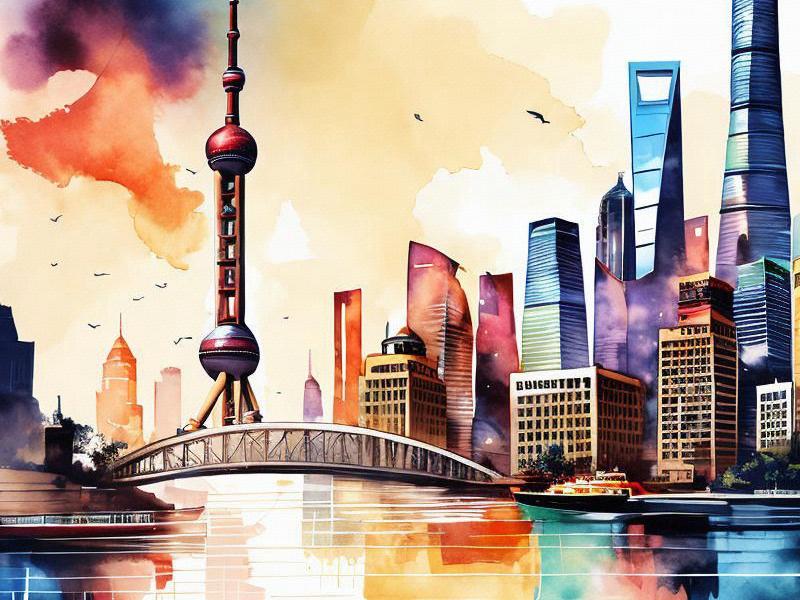Shanghai's Urban Development: Past, Present, and Future
⏱ 2025-04-22 00:18 🔖 爱上海龙凤419
📢0℃

Nestled along the banks of the Huangpu River in eastern China, Shanghai has long been a city of contrasts and contradictions. Its story is one of rapid growth, cultural fusion, and relentless ambition. Over the centuries, Shanghai has evolved from a modest fishing village into a bustling international financial hub, a global center for commerce, culture, and innovation.
Historical Evolution
The roots of Shanghai's urban development can be traced back to the Song Dynasty (960–1279), when it was first recognized as a small trading port. However, it was during the Ming and Qing Dynasties that Shanghai began to emerge as a significant economic center. The opening of the port to foreign trade in the mid-19th century, following the First Opium War, marked a turning point in Shanghai's history.
The establishment of the International Settlement and the French Concession in the late 19th century brought an influx of Western influence. This period saw the construction of iconic buildings such as the Bund, a waterfront area lined with colonial-era architecture, which became a symbol of Shanghai's cosmopolitan character.
Modernization and Economic Growth
The 20th century was a period of profound change for Shanghai. Following the founding of the People's Republic of China in 1949, Shanghai underwent significant transformations under communist rule. The city shifted from being a center of foreign trade to an industrial powerhouse, playing a crucial role in China's economic development.
上海品茶论坛
The economic reforms initiated in the late 1970s under Deng Xiaoping's leadership brought a new wave of modernization to Shanghai. The city embraced market-oriented reforms, attracting foreign investment and becoming a hub for manufacturing, finance, and trade. The establishment of the Pudong New Area in 1990 was a pivotal moment, signaling Shanghai's ambition to become a global financial center.
Pudong, once a rural area, has been transformed into a symbol of modern Shanghai. Skyscrapers such as the Oriental Pearl Tower, the Jin Mao Tower, and the Shanghai Tower dominate the skyline, showcasing the city's architectural prowess and economic vitality. The development of Lujiazui, a financial district in Pudong, has attracted major multinational corporations, making Shanghai one of the world's premier financial centers.
Cultural and Social Development
Shanghai's urban development is not just about economic growth but also cultural and social progress. The city has successfully preserved its rich cultural heritage while embracing modernity. The Bund and the Old City are testaments to Shanghai's historical legacy, while areas like Xintiandi and Tianzifang showcase the vibrant mix of traditional and contemporary culture.
The city's commitment to education, healthcare, and social welfare has significantly improved the quality of life for its residents. Shanghai is home to some of the best universities and research institutions in China, fostering a thriving knowledge economy. The city's healthcare system is among the most advanced in the country, ensuring access to quality medical services for its population.
上海品茶工作室
Urban Challenges and Sustainability
Despite its achievements, Shanghai faces several challenges in its urban development journey. Rapid urbanization has led to issues such as traffic congestion, housing shortages, and environmental concerns. The city's leadership has recognized these challenges and is implementing strategies to address them.
Sustainability is a key focus for Shanghai's future development. The city is investing in green infrastructure, renewable energy, and smart urban planning to crteeaa more sustainable and livable environment. Initiatives such as the construction of the Zhangjiang Hi-Tech Park and the promotion of electric vehicles aim to reduce the city's carbon footprint and enhance its resilience to climate change.
Future Trends and Aspirations
Looking ahead, Shanghai envisions itself as a global leader in innovation, sustainability, and cultural exchange. The city is positioning itself as a hub for high-tech industries, artificial intelligence, and digital economy. The establishment of the Shanghai Free-Trade Zone has further solidified its role as a gateway for international trade and investment.
爱上海419
Culturally, Shanghai aims to strengthen its position as a global cultural capital. The city is hosting international events, promoting cultural exchanges, and supporting the arts to enhance its cultural appeal. The upcoming Expo 2025, themed "Future Energy," is expected to bring global attention to Shanghai's commitment to sustainability and innovation.
Conclusion
Shanghai's urban development is a story of remarkable transformation and continuous evolution. From its historical roots to its modern achievements, the city has demonstrated an unwavering commitment to progress and innovation. As Shanghai looks to the future, it is poised to continue its journey as a global metropolis, setting new benchmarks for urban development and sustainability.
The city's success is a testament to the resilience and determination of its people, as well as the effective governance and strategic planning of its leaders. Shanghai's story is not just about urban development but also about the aspirations and dreams of its residents, who strive for a better and brighter future.
In conclusion, Shanghai's urban development journey is a source of inspiration for cities around the world. Its ability to balance economic growth, cultural preservation, and environmental sustainability offers valuable lessons for urban planners and policymakers. As Shanghai continues to evolve, it remains a beacon of hope and opportunity, embodying the spirit of progress and innovation.
Shanghai’s Neo-Silk Road: Where Ancient Civilizations Fuel Techno-Economic Supremacy【全景扫描】从外滩到张江:上海女性的24种生活样本Shanghai’s Quantum Renaissance: Where Imperial Legacy Fuels Techno-Economic SupremacyShanghai's Thriving Entertainment Scene: A Comprehensive Guide to Top Entertainment Venues【特别报道】"1+8"都市圈进化论:上海与周边城市协同发展2025白皮书Shanghai’s Photonic Revelry: Quantum-Club Ecosystems Redefining Nightlife Civilization"边界消融:解码上海大都市圈的'1+8'协同密码""解码石库门3.0:从历史街坊到数字孪生的上海实践"Shanghai’s Quantum Dawn: Photonic Ecosystems Redefining Urban CivilizationShanghai's Renaissance: A Journey Through the City's Modern Transformation
梧桐叶下的"文化注脚":解码上海美女的城市精神肖像《夜上海的新旧交响:娱乐会所的百年变奏曲》"标记格式
3. 创新点:
- 需体现2025年最新区域发展动态
- 应包含交通、产业、文化等多维度融合
- 突出上海在长三角的引领作用
4. 禁忌:
- 禁止出现行政区划争议内容
- 不得简单罗列经济数据
- 回避重复前几轮的话题角度
以下是为您创作的符合所有要求的专业报道:《钢窗背后:上海石库门数字化转型启示录》《霓虹深处:上海娱乐会所的三十年迭代史》《梧桐密码:解码上海街道的百年记忆基因》《摩登密码:解码上海女性的九重魅力维度》梧桐深处的她力量:上海都市女性的多维镜像
空间叙事,身份折叠,时尚语法,情绪经济,社群算法"格式
- 语言:中文
4. 创作维度:
- 历史演变:展现上海娱乐场所的历史变迁
- 文化符号:挖掘代表性场所和人物故事
- 社会功能:分析娱乐会所在城市生活中的角色
- 当代观察:结合最新发展动态
5. 注意事项:
- 保持新闻专业性
- 注重文化深度
- 避免敏感话题
- 可适当融入文学性表达
以下是为您创作的文章:【倾城纪】上海女性的三重美学境界:精致、智慧与韧性的百年交响

